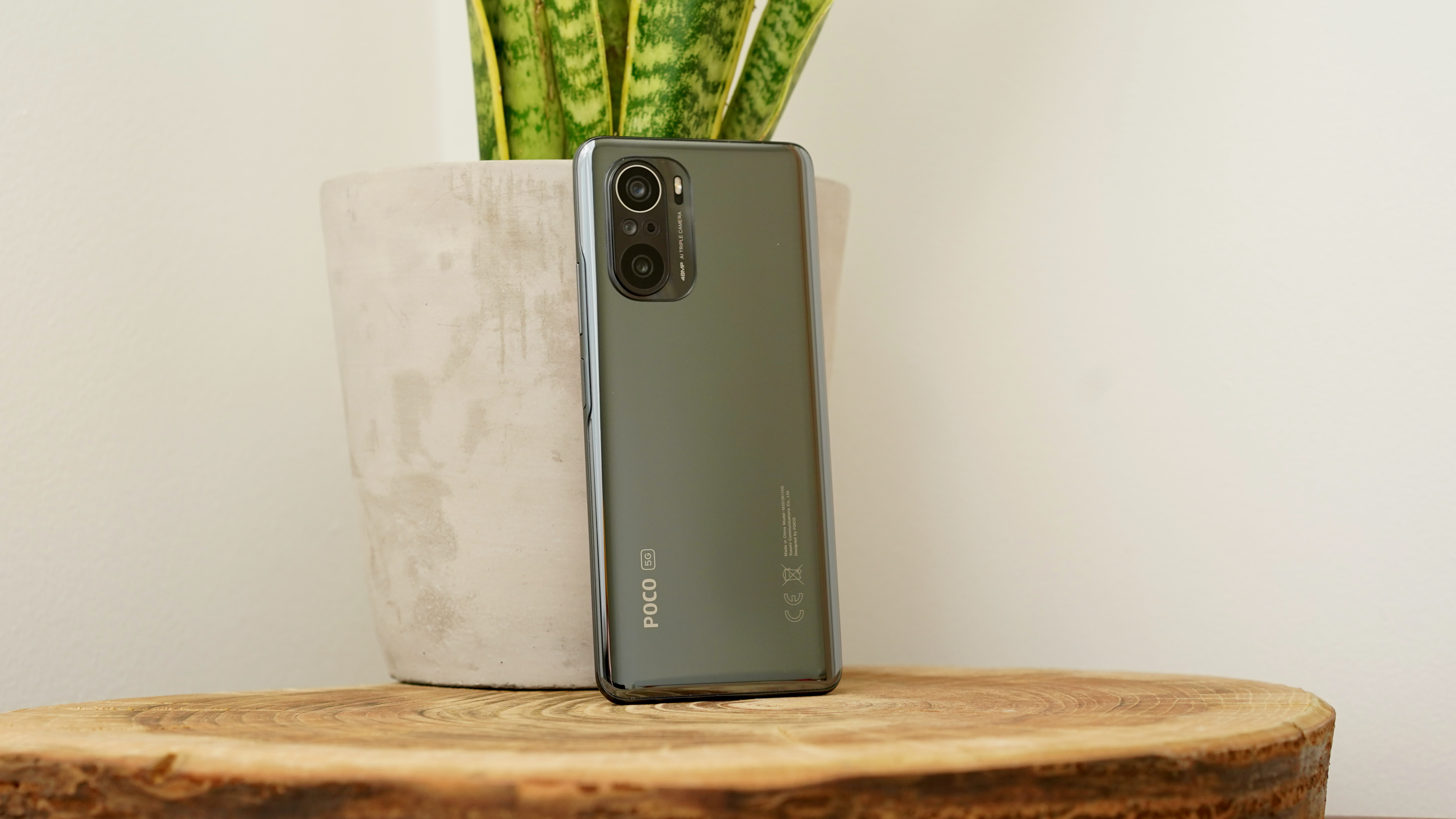TechRadar Verdict
With class-leading performance, an outstandingly bright and fluid display, and a tidy design, the Poco F3 might just have you renouncing flagships for the foreseeable future. Only a mediocre camera and the usual MIUI quibbles threaten to sour an outstanding deal.
Pros
- +
Bright and responsive display
- +
Great performance within its class
- +
Solid, classy build
Cons
- -
MIUI is full of annoyances
- -
Mediocre camera
- -
No wireless charging
Why you can trust TechRadar
Two-minute review
The Xiaomi Poco F3 is a considerable step up from the Poco X3 NFC in virtually every regard, including price. But it still represents a bit of a bargain considering what you’re getting.
With an extremely fast Snapdragon 870 chipset and an impeccable 120Hz AMOLED display, it gets closer to that flagship feeling than the vast majority of sub-£400/$500 phones.
Gamers and media fiends on a budget, in particular, will want to bump the Poco F3 to the top of their wish list. We simply can’t think of a more capable phone for the money - not with such a responsive display and near-flagship levels of performance, at any rate.
Battery life is strong, too, with the Poco F3 capable of standing up to a day of intensive usage. Meanwhile, the provision of a 33W fast charger is both more generous and more rapid than any current offering from Apple or Samsung.
Compromises have been made to hit that lower-mid-range price point, of course. You’ll have to make do with a plastic frame rather than a metal one, there’s no wireless charging, and you’ll have to get by without an IP rating.
But the most consequential rollback is the phone’s camera system, which is somewhat disappointing. While images look sharp and natural using the 48MP main camera in good lighting, the Poco F3 lacks photographic chops in every other area. Its ultra-wide offering is mediocre at best, and there’s no telephoto camera to call upon. Night shots, too, lack definition.
Elsewhere, MIUI (Xiaomi's Android skin) continues to be a bit of a mixed bag. It’s highly customizable and plenty fluid, but it’s not without bloatware, and there are a couple of irritating rough edges that you simply don’t get with a more stock Android-oriented UI.
None of that is enough to stop the Xiaomi Poco F3 from being a deeply compelling option at the price and ranking among the best Xiaomi phones. Using the phone day to day simply feels more flagship-like than any of its contemporaries, whether that’s the Samsung Galaxy A52 5G or the Google Pixel 4a.
Xiaomi Poco F3 release date and price
- Available April 12 in the UK, also out in Europe
- Prices start from £329 (around $450, AU$590)
Weight: 196g
Dimensions: 163.7 x 76.4 x 7.8mm
Display size: 6.67-inch
Resolution: 1080 x 2400
Chipset: Snapdragon 870
RAM: 6/8GB
Storage: 128/256GB
Rear camera: 48MP + 8MP + 5MP
Front camera: 20MP
Pre-installed software: Android 11
Battery: 4,520mAh
Charging: 33W wired
The Poco F3 was announced on March 22, 2021. It went on sale in the UK less than a month later, on April 12.
Prices start from £329 (around $450, AU$590) for a model that comes with 6GB of RAM and 128GB of storage. But there’s a very reasonably priced upgrade path to 8GB of RAM and 256GB of storage for just £349 (about $480, AU$625). Western availability for the Poco F3 is limited to the UK and Europe at the time of writing.
At this price, the Poco F3 leaps straight into competition with the likes of the Samsung Galaxy A52 5G, the Pixel 4a, and even the Xiaomi Mi 11 Lite. And while it has one particular weakness compared to each of these phones, it stomps past them in other key areas.
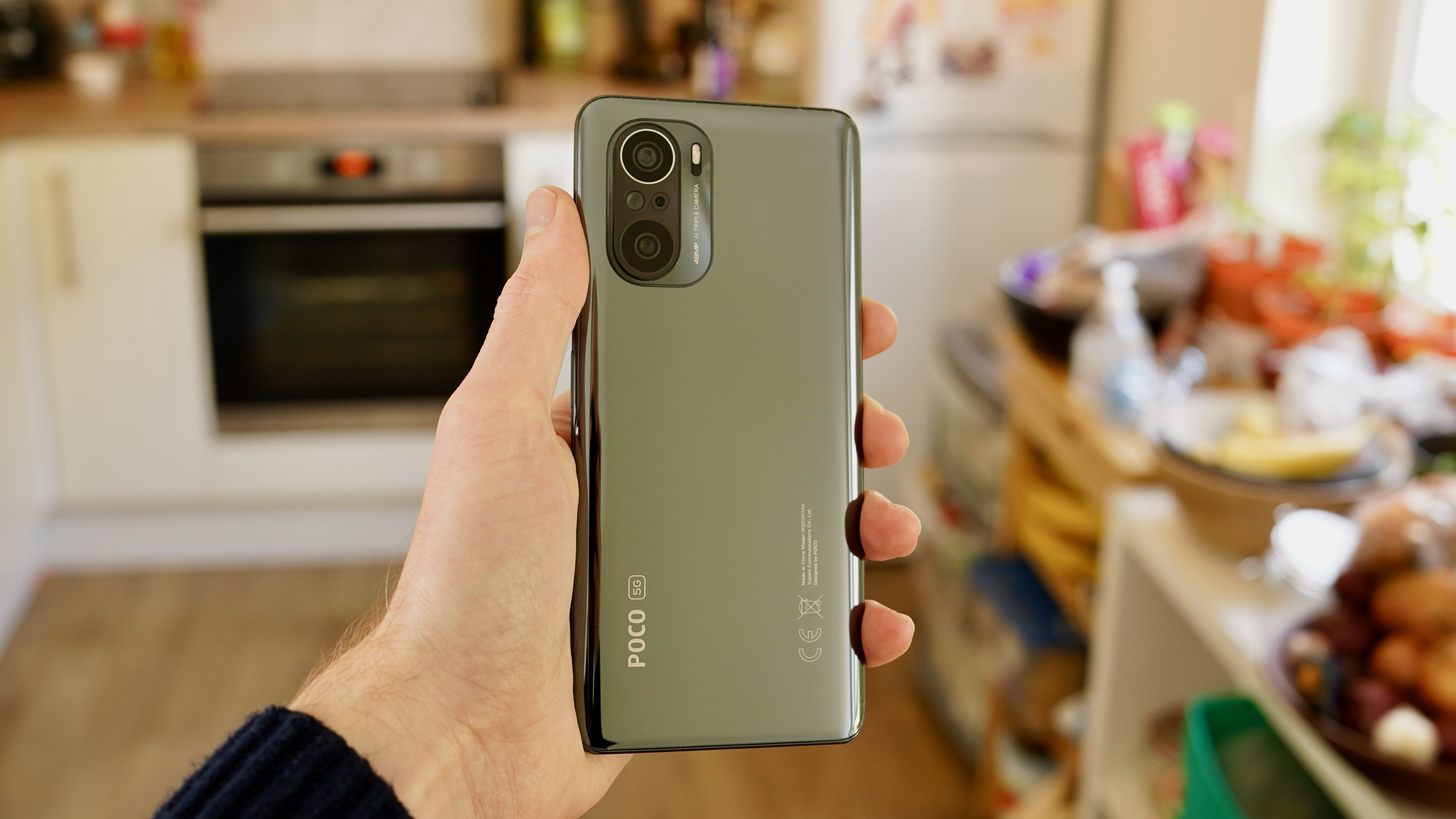
Xiaomi Poco F3 design
- Glass back, plastic sides
- Skinny (7.8mm) and fairly hefty (196g)
- Side-mounted fingerprint sensor
The Xiaomi Poco F3 has got ‘one of those faces’. You swear you’ve seen it before, even if you know full well that this is the first time you’ve laid eyes on it.
Those who keep an eye on parent company Xiaomi’s skittish global release strategy will understand why that is. The Poco F3 is essentially a rebranded Redmi K40, and it also sports a nigh-on identical design to the Xiaomi Mi 11i. It’s the same phone, partially reconfigured for different markets and price points.
As you might suspect from such a one-size-fits-all approach, the F3 proves to be tidy, well considered, impeccably well built, and somewhat nondescript.
It has Gorilla Glass 5 on the front and rear, so the phone feels fairly premium. You even get that super-reflective, fingerprint-attracting finish that flagship manufacturers seem to love. But the F3’s sides are pure plastic, albeit one that diffuses light in a vaguely metallic fashion.
The lozenge-within-a-rounded-rectangle camera module is a classy touch, and nods to the mainline Xiaomi Mi 11 range.
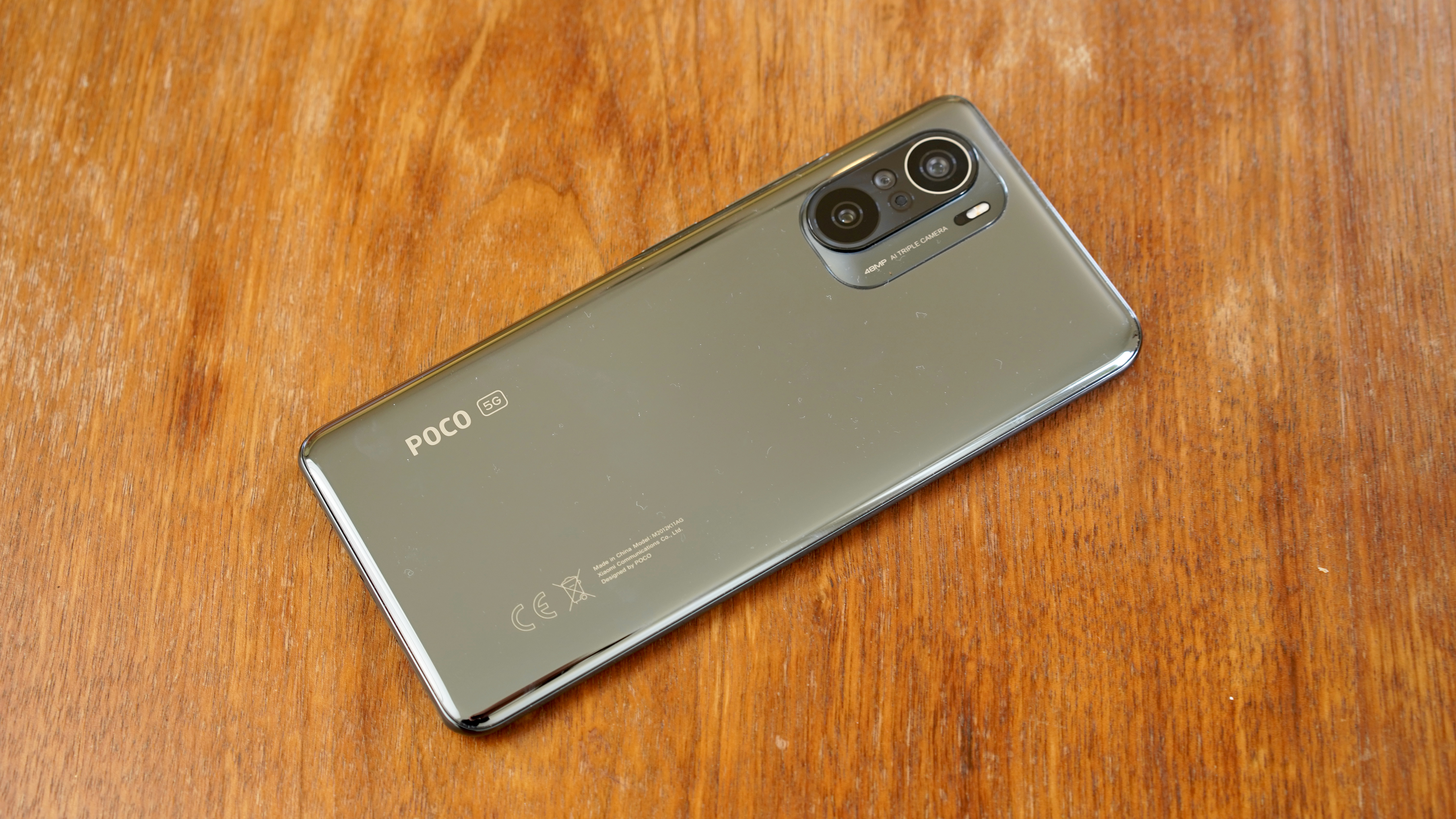
All that glass combines to create a phone that’s hardly lightweight at 196g, though it’s not excessively heavy. It helps that the phone is also quite skinny at just 7.8mm thick.
Around front, the Poco F3 adopts the typical all-screen approach, albeit with a slightly larger chin than some and a dead-flat display. Another giveaway that you’re dealing with a less-than-flagship phone is the central punch-hole camera, which has a slightly off-putting shiny surround.
Those plastic sides house a fingerprint sensor, which is fast and reliable. We would have liked it to be slightly recessed or textured to help find it in an instant, but it’s not a major issue.
You also get a decent set of stereo speakers situated in the earpiece and the bottom of the device. These offer decent volume and bass for a mid-range phone, making them great for gaming and media playback.
One other concession that highlights the Xiaomi Poco F3’s modest price is the lack of an IP rating. We’ve seen IP53 listed in relation to the phone in some unofficial quarters, but even if true, that only makes the phone splash resistant.
All in all, though, this is a phone that disguises itself well as a more premium, prestigious device. It looks and feels good, even if it fails to set the pulse racing in the same way as, say, the Xiaomi Mi 11 Lite.
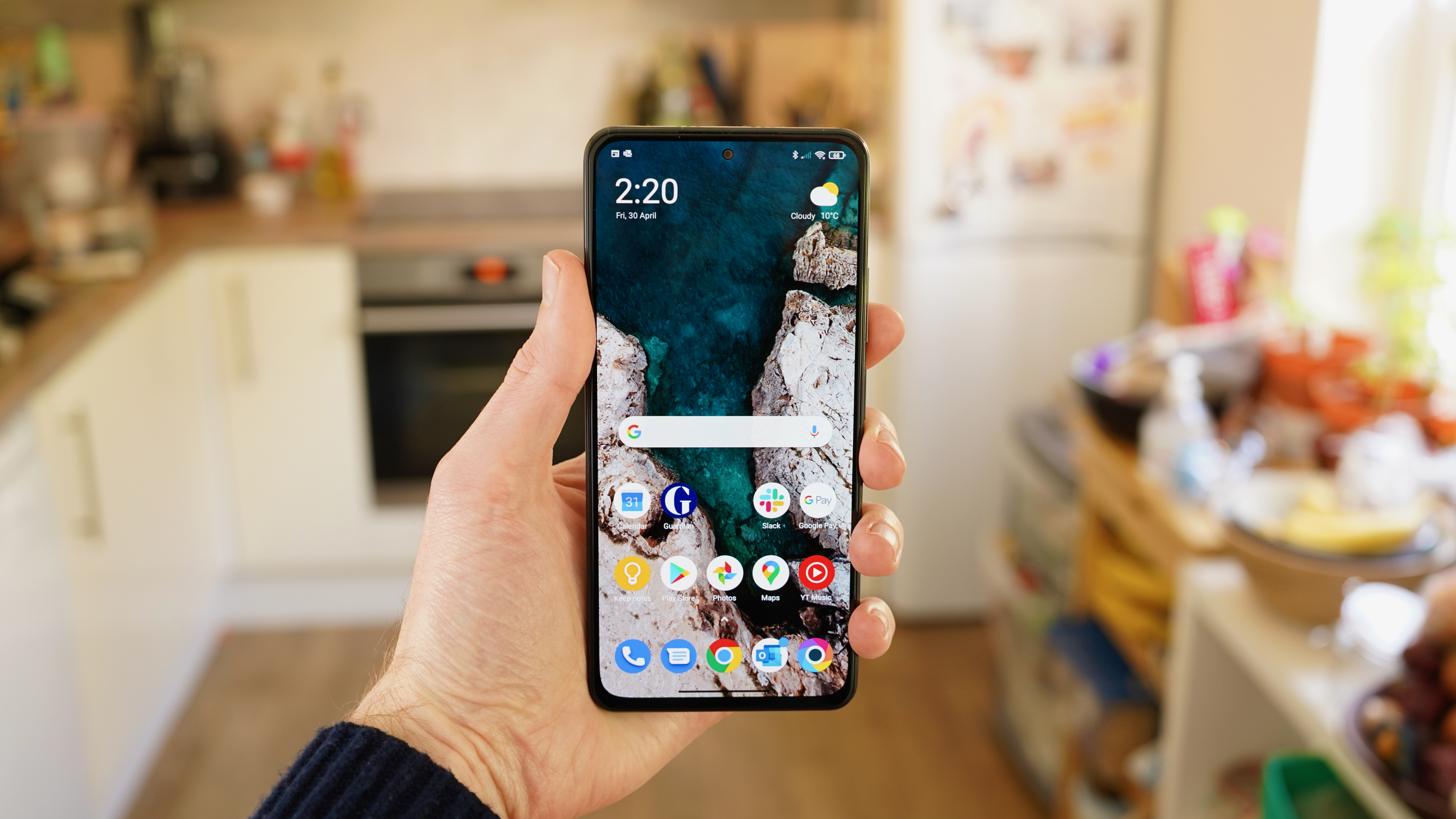
Xiaomi Poco F3 display
- Strong 6.67-inch 120Hz AMOLED
- Supports HDR10+ and 100% DCI-P3
- 360Hz touch sampling rate makes it great for gamers
Another element that makes the Xiaomi Poco F3 perfectly suited to gamers and video watchers on a mid-range budget is its superb screen. The official line is that it’s “Poco’s clearest display yet”, and we wouldn’t dispute that for one minute.
This is a 6.67-inch AMOLED display that gets nice and bright, with a peak brightness of 1,300 nits. That’s the same as the Oppo Find X3 Pro - a phone that costs more than three times the money.
You don’t get that extravagant phone’s full QHD+ resolution, of course, but FHD+ (1080 x 2400) proves to be plenty. It’s also suitably vibrant, with support for HDR10+ and 100% DCI-P3 coverage.
The Poco F3 screen gives you a full 120Hz refresh rate, too, so everything scrolls by super smoothly. You can also turn on an MEMC mode that essentially upscales lower refresh rate videos.
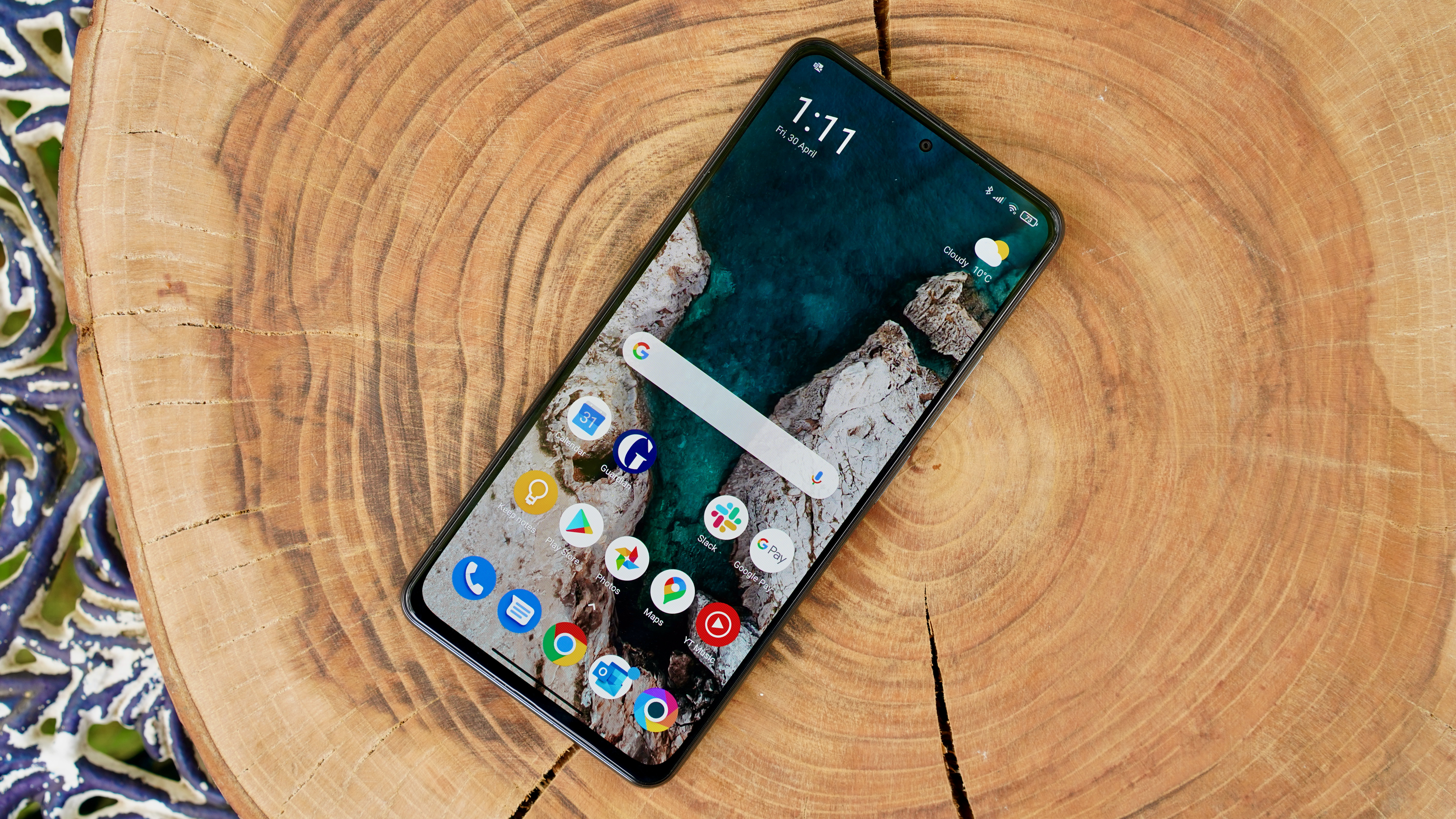
Perhaps more impressively - albeit in a rather niche way - is the phone’s 360Hz touch sampling rate. This is a feature that enhances the responsiveness of your touch inputs, and is specifically targeted at gamers. Most modern flagship phones will give you 240Hz, so this is impressive stuff.
Just about the only criticism we have related to the display is actually a criticism of the Poco F3’s MIUI software. When diving into the color scheme settings menu to play with the color balance, you’ll find that it’s set to auto by default, which “Adjusts colors based on the current lighting.”
Scroll down and you’ll find a separate adaptive colors toggle which, when activated, will “Adjust colors to ambient light”. There is no explanation as to how these two modes differ.
In purely hardware terms, however, the Xiaomi Poco F3’s display is unimpeachable.
Xiaomi Poco F3 camera
- 48MP main camera is just okay in decent lighting
- 8MP ultra-wide isn’t very good at all
The Xiaomi Poco F3 has a 48MP main camera based on a Sony IMX582 sensor, with an f/1.8 lens and PDAF (phase detection autofocus). This is backed by an 8MP f/2.2 ultra-wide and a 5MP f/2.4 telemacro camera, while selfies are handled by a 20MP f/2.5 front camera.
We were ever so slightly disappointed with the results of shooting with the Poco F3. It’s not that the shots we took were poor, but rather that they were just okay. And when you have a phone that exceeds expectations in so many ways, you really notice when it doesn’t.
Daylight shooting is perfectly decent, with bright, well balanced shots that resist punching colors up too much. Poco’s/Xiaomi’s potent scene-recognizing AI really paid off in one or two tricky situations, such as when shooting some food under gazebo. The slightly odd lighting didn’t throw it off the scent as it did with the Samsung Galaxy A52 5G.
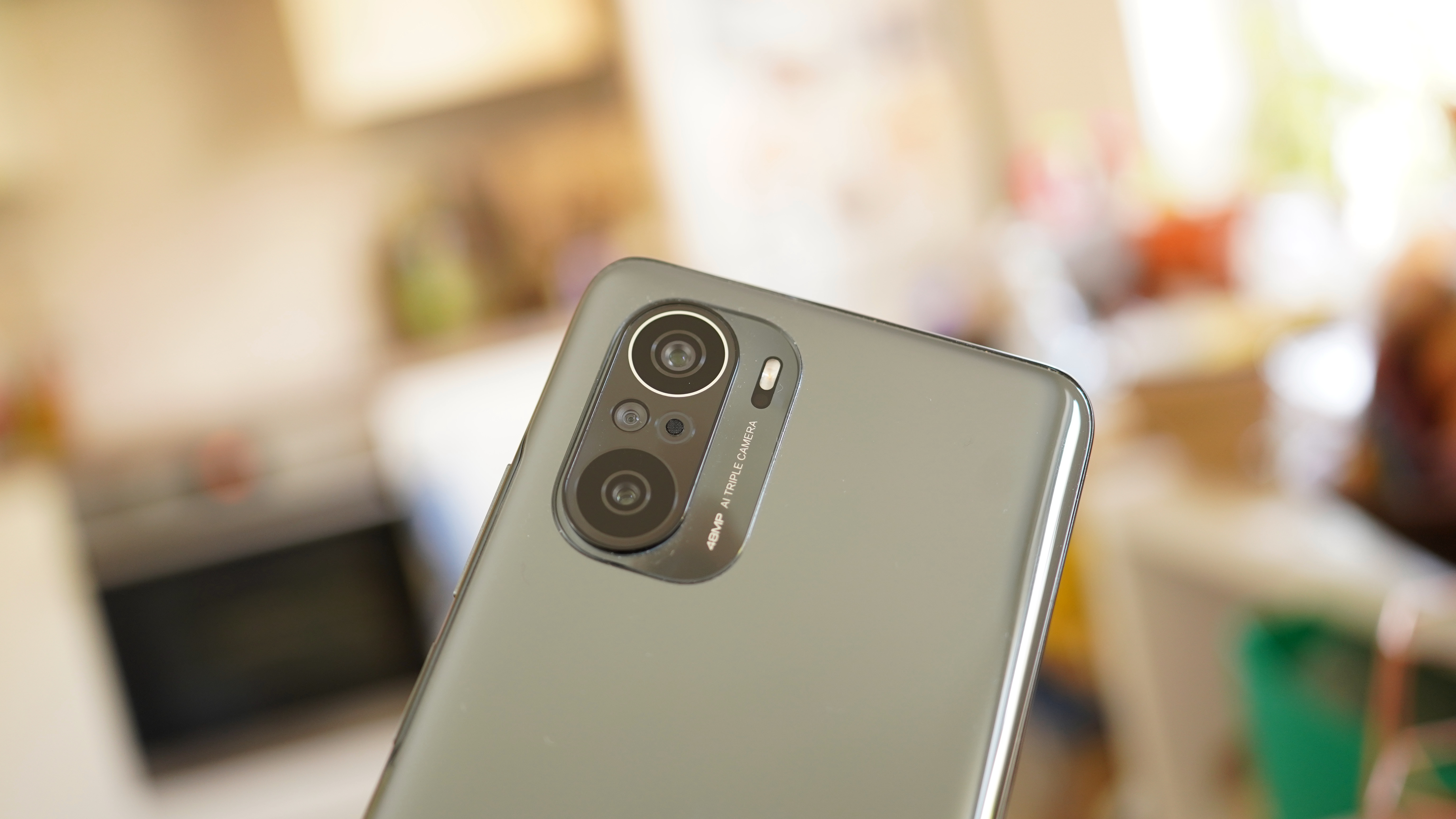
Samsung’s latest mid-ranger is a good reference point here. The odd whiffed shot and overly punched-up colors aside, the Galaxy A52 5G offers a more complete, better-rounded camera system than its rival. The Poco F3 simply doesn’t capture as much fine detail, and its HDR tools don’t even out the shadows quite as well.
While the Poco F3’s main camera hits par, however, its 8MP ultra-wide falls short. Images are very soft, colors are markedly different to their wide equivalents, and there’s stacks of grainy noise at the edges. Again, Samsung’s rival effort hands out a beating in this regard.
The third snapper here is a 5MP telemacro camera. It’s better at taking extreme close-ups than the token 2MP atrocities that many cheap phones pack in, but we’d still prefer a competent telephoto lens with a higher pixel count. We just can’t see many people using this all that much.
Without the super-high pixel count of the 108MP sensor employed in the Xiaomi Redmi Note 10 Pro, there’s much less cropping potential for the Poco F3’s 2x zoomed shots. They’re rather fuzzy as a result.
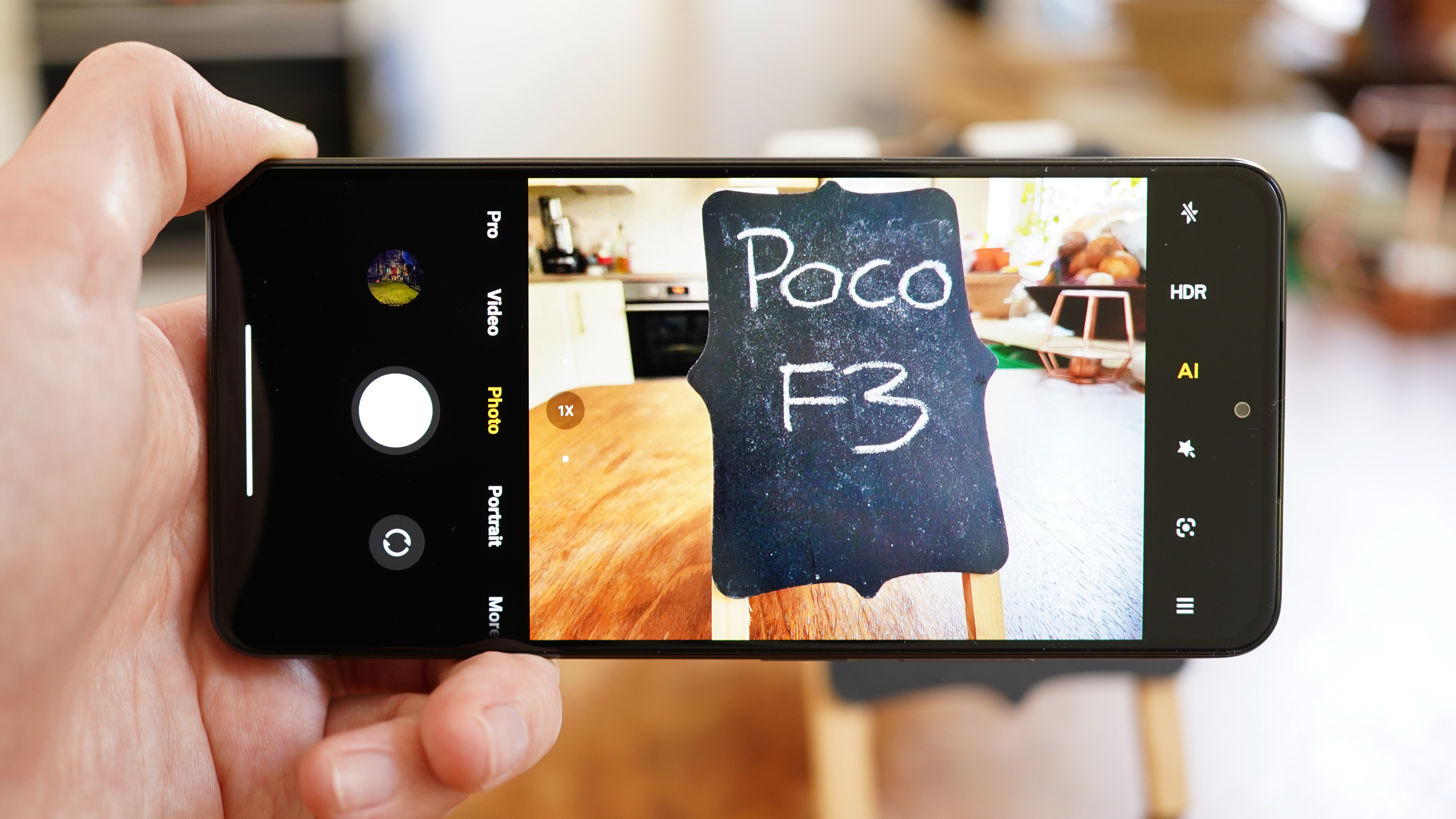
The 20MP selfie camera is pretty good, and captures crisp shots with decent balance in good lighting. But the selfie portrait mode is slightly hit-and-miss, throwing weird halo effects into the mix. Conversely, portrait mode using the main camera yielded a much cleaner separation between subject and bokeh-enhanced background.
The Poco’s night shots are pretty standard for this section of the market - i.e. not particularly great. There’s something to be said for the way it preserves genuinely dark areas rather than artificially brightening them, and the way it preserves colors.
But where it does illuminate scenes there tends to be stacks of noise. It can’t help that the Xiaomi Poco F3 lacks optical image stabilization, unlike the Galaxy A52 5G and the Pixel 4a, both of which take better low light snaps.
Those aforementioned rivals really show what’s possible in the sub-£400/$500 category if a manufacturer chooses to place its focus and resources into the camera. With the Poco F3, the decision seems to have been made to favor performance, and the result is a somewhat underwhelming camera system.
It’s an understandable choice rather than a glaring flaw, but it’s worth figuring out your own priorities before placing your money down.
Camera samples









Xiaomi Poco F3 specs and performance
- Snapdragon 870 and 6GB/8GB RAM gives genuine flagship performance
- Arguably the best gaming phone for the money
The Poco F3’s trump card, aside from its excellent display, is its raw performance level. It’s considerably faster than its peers, and is capable of going toe-to-toe with phones twice the price.
This is made possible through the use of the Snapdragon 870 chipset, which is essentially an overclocked Snapdragon 865, last year’s flagship processor of choice. Combined with 8GB of LPDDR5 RAM (there’s also a 6GB model), it means that you’re getting flagship performance here, even if it’s not at the cutting edge.
An average Geekbench 5 multi-core score of 3,369 draws it exactly level with the international variant of the $799 / £769 / AU$1,249 Samsung Galaxy S21, with its Exynos 2100 chip. It’s way ahead of the Samsung Galaxy A52 5G, with its Snapdragon 750G, on 1,886.
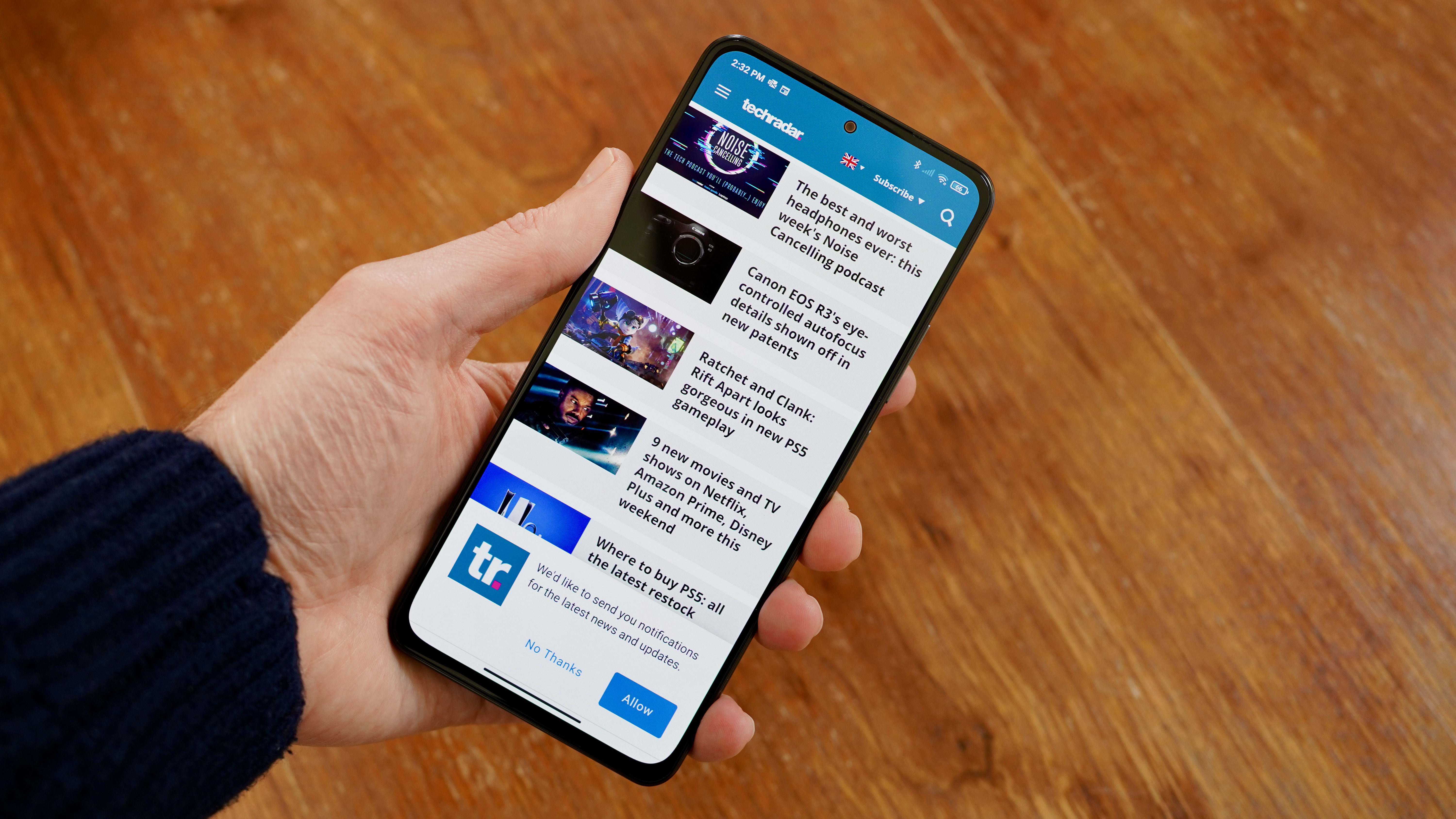
On the GPU side, a 3DMark Wild Life score of 4,086 blasts past the Xiaomi Mi 11 Lite and its Snapdragon 732G on 3,120. But that’s still quite a bit short of Snapdragon 888 devices like the OnePlus 9, which tend to score in the region of 5500.
Booting up the demanding yet hugely scalable Genshin Impact, we found that the game defaulted to Medium settings for a silky smooth experience. But we were able to then crank things up to High settings and a 60fps frame rate, and the results remained eminently playable. That’s no small feat with such a vast and visually opulent open world adventure game.
When you take this impressive performance level into account alongside the Poco F3’s fluid display and capable stereo speakers, we’d posit that it’s now the best gaming phone available for around the £350/$450 mark.
There’s ample storage, with a choice of either 128GB or 256GB of speedy UFS 3.1 storage, though there’s no room for expansion. You also get 5G connectivity as standard.
Xiaomi Poco F3 software
- Android 11 with MIUI 12
- MIUI is bloated and confusing
- The themes store is a slick customization tool
We’ve had a lot of opportunity to grow accustomed to the MIUI software used here, given the recent deluge of Xiaomi-affiliated devices that has crossed our desk, but the company’s software is undoubtedly improving.
MIUI 12 (based on Android 11) is generally fast, fluid, and easy to use, and there aren’t many Android skins that present you with so many customization options. We particularly like how you can opt to split the drop-down shade into shortcut toggles and notifications depending on which side you drag from.
Xiaomi’s themes store is one of the most fully-featured and downright slick storefronts of its kind, enabling you to download and apply a vast range of looks and styles to your home screen.
But as much as we can praise MIUI’s improvement, it’s far from perfect. In fact, it’s full of annoying or just plain mystifying elements.
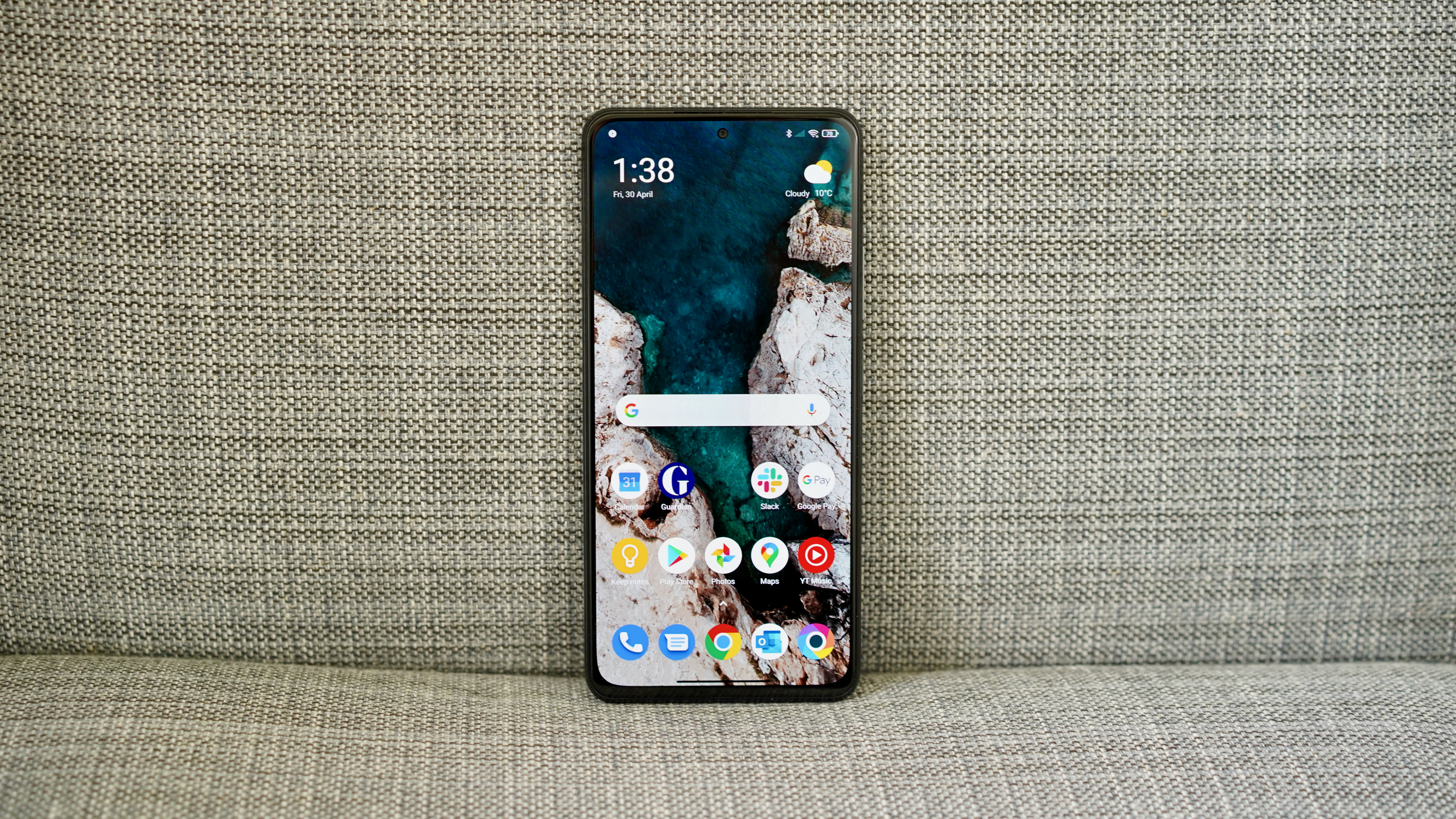
MIUI rarely seems to put its best foot forward, defaulting to a 60Hz screen refresh rate, the old notification shade style, and virtual home screen buttons rather than the more modern gesture system. You have to do a fair amount of digging around at the outset to get things in optimal working order.
It’s also really (REALLY) annoying how MIUI interrupts whatever you happen to be doing with a big, largely blank full page notification simply to tell you that a new app has been installed and scanned.
And it’s still all too possible to get lost in MIUI’s labyrinthine settings menu, where not everything is where it should be. Or so it seems.
Then there’s the age-old issue of bloatware, with lots of Xiaomi’s own tools, some ropey games, and a handful of third-party apps presumptuously pre-installed. Can someone tell us why there needs to be three web browsers pre-installed? Anyone?
Xiaomi Poco F3 battery life
- 4,520mAh battery gives you a full day of intensive usage
- 33W charger gets you a complete charge in less than an hour
In keeping with its near-flagship specs, the Xiaomi Poco F3 packs in a flagship-like 4,520mAh battery. That’s the kind of capacity you’ll find in the OnePlus 9 Pro rather than the cheaper Poco X3 NFC and its mammoth 5,160mAh cell.
It results in a true all-day device that will get you through to bed time, even with fairly intensive usage. On one occasion we reached a day and a half of usage, which included around 3 hours of screen-on time (which is light to moderate) and 5 minutes of camera use (which is quite intensive), before we dropped below 20% and received our first low power warning.
Media usage doesn’t hit the Poco F3 particularly hard, either. Our typical test involves a 90-minute looped video, with the screen brightness set to full, during which the Poco lost 7%. The Xiaomi Mi 11 Lite, with its dimmer, less fluid display, lost 11% in the same test.
If you’d like the official stats on this, the company claims that you’ll wring 268 hours of standby time, 10 hours of gaming, 14 hours of videos, or 149 hours of music out of the Poco F3's battery
Like many of Xiaomi’s cheaper phones, you get a 33W charger in the box. That’s nothing particularly unusual, but it’s still fast, juicing up to 100% in less than an hour. However, there's no wireless charging.
Should I buy the Xiaomi Poco F3?
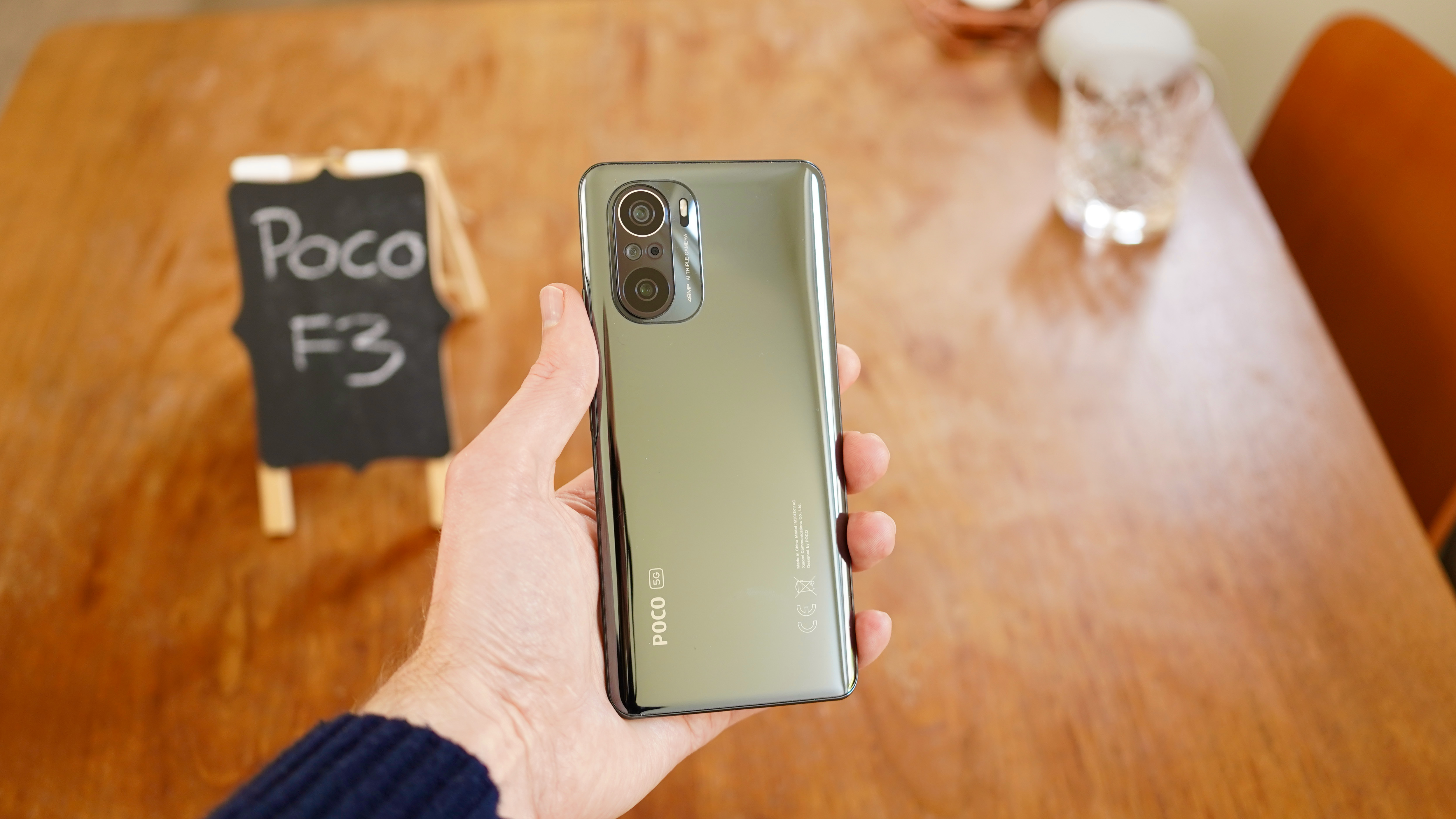
Buy it if...
You demand maximum bangs for mid-range bucks
The Poco F3 offers outstanding performance for the money. Thanks to a Snapdragon 870 chipset and 6GB or 8GB of fast RAM, it gets within touching distance of the latest flagship phones for most tasks.
You’re a gamer on a budget
It’s not just that Snapdragon 870 that makes the Poco F3 great for gamers on a budget - it also has a bright, 120Hz AMOLED display with a stonking 360Hz touch sampling rate. Add in a decent set of stereo speakers, and you’re in mobile gaming heaven.
You like to tweak your home screen
MIUI doesn’t get everything right, but its themes store offers one of the slickest customization tools around. If you like to give your phone a personal yet polished finish, the Poco F3 could be the ideal device for you.
Don't buy it if...
You value a decent camera above all else
The Poco F3’s camera isn’t bad, but you can do better for the money. The likes of the Pixel 4a, Samsung Galaxy A52 5G, and even the Xiaomi Mi 11 Lite all prioritize camera performance for similar money.
You take a lot of ultra-wide snaps
Sticking with the camera, the Poco F3’s 8MP ultra-wide really isn’t very good at all. If you take a lot of zoomed-out landscape shots, you’re much better off with the Pixel 4a or the Samsung Galaxy A52 5G.
You like your software clean and classy
MIUI has come on leaps and bounds, and it’s very customizable, but it’s also rather messy and convoluted. There’s a whole stack of bloatware here, not to mention several confusing or downright irritating UI elements.
Also consider
Now that you've read our Xiaomi Poco F3 review, here are some other phones you might also consider.
Poco X3 NFC
The Poco X3 NFC spent a long time at the top of our list of the best phones, thanks to the bargain you're getting with all its specs and features. It's more affordable than the F3, so you may be considering it and you wouldn't be wrong.
Check out our Poco X3 NFC review
Samsung Galaxy A52 5G
If buying a cheap Chinese phone scares you, then Samsung has a similar-priced rival that you might consider instead. It's good looking and has an impressive screen, though is slower than the Poco.
Check out our Samsung Galaxy A52 5G review
Xiaomi Mi 11 Lite
If you want a smaller and more attractive budget phone, Xiaomi's Mi 11 Lite is the option for you - it won't stretch your hand like the Poco and it'll feel similar to use.
Check out our Xiaomi Mi 11 Lite review
First reviewed: May 2021
